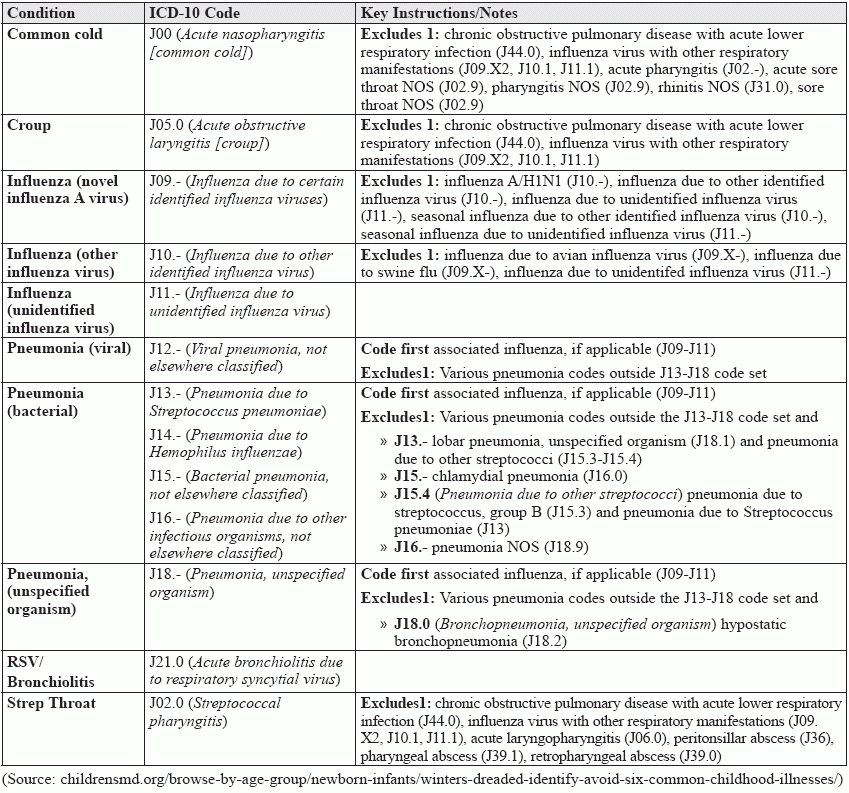Master Common Winter Woes with This Coding Chart

Boost your documentation with tips from the experts. During the season of giving, some of the gifts passed from one person to the next are colds, coughs, and flus. And that means you are going to be especially busy treating and coding some pretty familiar illnesses. So, we’ve put together this quick-reference guide to help you speedily and efficiently locate many of the ICD-10 codes and guidelines you need to document some of the most common winter conditions. And we’ve added three great pieces of expert advice that will help you avoid some of the common coding pitfalls associated with them. Tip 1: Pay Close Attention to Notes and Work with Your Provider. “Identifying the highest level of specificity is necessary to ensure proper reimbursement,” Donelle Holle, RN, president of Peds Coding Inc., and a healthcare, coding, and reimbursement consultant in Fort Wayne, Indiana, reminds coders. But that is not always easy where respiratory diagnoses are concerned. “So much of the coding is based on specific documentation, but providers often do not provide enough documentation to support manifestations or the strain of influenza, for example. So many will simply rely on the not elsewhere classified (NEC) codes,” says Donna Walaszek, CCS-P, billing manager, credentialing/coding specialist for Northampton Area Pediatrics, LLP, in Northampton, Massachusetts. “Winter illnesses can present with multiple symptoms,” agrees Holle. “While providers will have to determine just what the illness is, coders should encourage them to use more than one diagnosis code as appropriate,” Holle adds. Tip 2: Pay Attention to Virus Coding. If your provider does specify the viral agent causing the patient’s illness, you should remember that there are different ways to identify it. Some conditions, such as J12.- (Viral pneumonia), require “a fourth or maybe even a fifth digit when identifying the virus,” Holle says. However, J05.- (Acute obstructive laryngitis [croup] and epiglottitis) will require you to use an additional code from the B95-B97, Bacterial and viral infectious agents category such as B97.4 (Respiratory syncytial virus as the cause of diseases classified elsewhere), warns Walaszek. Tip 3: Pay Close Attention to ICD-10 Code Also Notes. “Don’t forget that you need to add exposure to smoking,” cautions Holle. The Code Also note at the beginning of the Diseases of the Respiratory System chapter (J00-J99) states that for all the codes in the chapter, you will need to add codes such as Z77.22 (Contact with and (suspected) exposure to environmental tobacco smoke (acute) (chronic)), F17.- (Nicotine dependence), or Z72.0 (Tobacco use) for any associated tobacco exposure, dependence, or use, Walaszek reminds.




